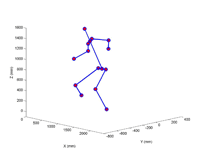In baseball circles, the concept of scapular loading is a somewhat confusing and controversial subject. Online baseball forums are full of people arguing the merits of scapular loading while others don’t believe it offers any real biomechanical advantage to the pitching motion. One of the reasons it is confusing is that the majority of people really don’t understand the complexity of scapular movement and the number of muscles that can alter scapular rotation.
Paul Nyman was the first to coin the term scapular loading to describe what he observed high level pitchers doing that allowed them to throw with high velocity. Chris O’Leary has subsequently published a lot of information on his website related to scapular loading. As O’Leary writes, if you look at photos of most major league pitchers, like Nolan Ryan, you will see that at some point in their motion, usually just before their Pitching Arm Side (PAS) forearm is about to pass through the vertical, high-cocked position and their shoulders start to rotate, they take their elbows behind their back and pinch their shoulder blades (or Scapulae) together. Paul Nyman’s theory is that this action helps to load the muscles on both sides of the shoulder and enables a pitcher to throw harder.
It is the next statements by O’Leary that cause my concern with the misunderstanding of scapular functionality. O’Leary writes, while I will not disagree that many pitchers seem to do this, I do question whether it has the effect that Paul Nyman thinks it does (due to the relatively small size of the muscles involved). As a result, Scapular Loading is not something that I focus on when teaching or evaluating pitchers. However, I believe that there appears to be a safe way to load one’s scaps and an unsafe way to load one’s scaps.
I bolded two statements in that previous paragraph. The first one in red is false and the reason for a lot of confusion. The second in blue is a statement that I do agree with, although my definitions are slightly different than O’Leary’s. In order to truly understand what scapular loading is, we first need to understand how the scapula rotates and functions as part of the complex shoulder girdle with special emphasis during the very dynamic pitching motion.
Eric Cressey provides an excellent description of why scapular upward rotation is so important for pitchers / throwers.
Beth Israel Deaconess Medical Center’s Nazarian Lab (Dr. Ara Nazarian)
Dr. Ara Nazarian is working with Drs. Arun Ramappa and Joseph DeAngelis on a Major League Baseball (MLB) funded study to explore whether scapulo-thoracic motion significantly affects superior labral strain. In his joint mechanics research studies, Dr. Azarian’s team has developed a 3D robotic system to move a cadaver model of the shoulder in a desired 3D motion and use high speed motion cameras to record the resultant motion. Their goal is to use these robotic controlled cadaveric models of the shoulder to evaluate discrete motion segments using the glenohumeral joint in isolation over a defined trajectory.
In their MLB study, they use the robotic system to simulate the normal throwing motion in an intact cadaver. Their system uses 7 actuators to move the torso independently with a lower frame and the arm with an upper frame. The actuators reproduce the planned trajectories to simulate the pitching motion. They install motion capture markers on the cadaver model to determine the 6 DOF rigid body motion for all involved joints during the planned motion of the end effector.
Dr. Azarian’s research has found that a misaligned scapula is a likely cause for many common shoulder injuries among pitchers. Dr. Ramappa, a co-leader of the research team and the chief of sports medicine and shoulder surgery at Beth Isreal Deconess says, “When pitchers experience a ‘dead arm’, unable to achieve the velocity, the scapula malposition is a major cause of this.”
The computer controlled robotics system moved the mechanized scaffold in the desired 3D motion to replicate a pitcher’s shoulder motion. They would first record the motions for the normal range of motion for the pitcher’s shoulder. The researchers then created various injury mechanisms to see how the changed motion affected the shoulder. They tried to replicate misaligned shoulder blades and cartilage tears.
They found that when the scapula was out of line, it increased the stress on the shoulder joint. This can impinge the movement of the rotator cuff, which is critical to shoulder mobility. Baseball pitchers are vulnerable to misaligned shoulder blades because of their repetitive , overhead arm movement patterns. They theorize that this can result in the overdevelopment or tightness in certain shoulder girdle muscles at the expense of other muscles creating a muscular imbalance. Per MLB statistics shoulder problems accounted for 17.4% of the injuries among all MLB players on the disabled list (DL), second only to elbow issues at 17.9% during the 2010 season.


